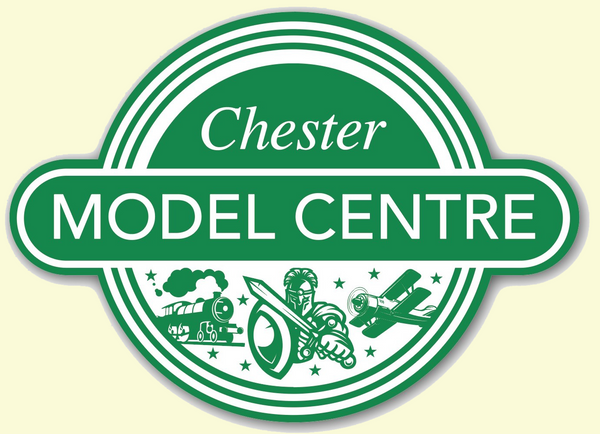Bachmann 35-421SF Sound Fitted Class 47/4 47526 BR Blue (Large Logo) - Weathered
Bachmann 35-421SF Sound Fitted Class 47/4 47526 BR Blue (Large Logo) - Weathered
Bachmann
Couldn't load pickup availability
Bachmann 35-421SFX Deluxe Sound Fitted Class 47/4 47526 BR Blue (Large Logo) - Weathered
Bachmann Branchline OO Scale
- Era 8
- Weathered BR Blue (Large Logo) livery
- Running No. 47526
- SOUND FITTED - Fitted with a ESU Loksound V5DDC Sound Decoder – See below for the function list
- Length 255mm
DETAIL VARIATIONS SPECIFIC TO THIS MODEL
- Flush Front at No. 1 End and Plated Headcode Panel with Sealed Beam Marker Lights at No. 2 End
- Twin Bufferbeam Brackets denoting a Crewe-built Machine
- Cab-Front-mounted ETH Equipment
- Single Arm Windscreen Wipers
- High Intensity Headlight
- Round Buffers
- Full Cab Roof Vents
- Serck Radiator Grilles
- Ribbed Exhaust Panels
- Blanked Roof Boiler Port
- 1,200 Gallon Water Tanks with Water Filler Valves
- Plated Bogie-mounted Cab Steps
- Slow Speed Speedo Drive
MECHANISM:
- Five pole, twin shaft motor with two flywheels providing drive to both bogies
- All axle drive
- Electrical pickup from all wheels
- Separate metal bearings fitted to each axle
- Diecast metal chassis block and bogie towers
- Diecast metal gearboxes, with gearing arranged for prototypical running speeds and haulage capabilities
- 16.5mm (OO gauge) wheels to NEM310 & NEM311 standards with authentic profile and detailing
- Detachable coupling pockets to NEM362 standards fitted to each bogie
- Designed to operate on curves of second radius (438mm) or greater
SOUNDS
F0 - Directional Lights - On/Off (plus Light Switch Sound)
F1 - On - Warm Engine Start / On, Off - Failed Engine Start / On, Off, On - Cold Engine Start
F2 - Brake
F3* - Horn (Playable)
F4* - Two-Tone Horn
F5 - Heavy Load
F6 - Coasting (Manual notch Down if F22 On)
F7 - Maximum Revs (Manual notch Up if F22 On)
F8** - On - Coupling Up / Off - Uncoupling
F9 - Flange Squeal (Speed Related)
F10 - Fan Noise
F11 - Engine Room Lights On/Off (plus Light Switch Sound)
F12 - On - Guard’s Whistle / Off - Driver’s Response Horn
F13 - Cab Lights On/Off No. 1 (plus Light Switch Sound)
F14 - Cab Lights On/Off No. 2 (plus Light Switch Sound)
F15 - Auto Uncouple Cycle
F16 - AWS Horn
F17 - AWS Bell
F18 - On - Sound Fades Out / Off - Sound Fades In
F19 - Mute (Latch) / Volume Cycles 6 Levels (Trigger)
F20 - No. 1 End (Fan) Directional Lights Off
F21 - No. 2 End (non-Fan) Directional Lights Off
F22 - Manual Notching Logic On/Off (control with F6 & F7)
F23 - Spirax Valve
F24 - Station Announcement
F25 - On - Driver’s Door Open / Off - Driver’ Door Shut
F26 - Air Dump
*Alternative Horn sounds and behaviour can be selected via CV changes
** Alternative coupling sounds can be selected via CV changes
Analogue Users: Please note that normal load running sounds and any other automatic or randomised sounds will also operate when this model is used on analogue control (DC) straight from the box!
CLASS 47 HISTORY
Towards the end of the 1950s, British Railways began planning a new fleet of diesel locomotives and after investigating several prototypes, BR decided to place an order with Brush Engineering for 20 locomotives during February 1961. The resulting design became the iconic Brush Type 4 Diesel locomotive, a practical, versatile design with a very distinctive cab. Powered with a Sulzer engine and initially rated at 2,750hp, the locomotive could achieve a top speed of 75mph with a tractive effort of 55,000lb. Building commenced in January 1962 and the first locomotive No. D1500 appeared in late September of the same year with test runs on the London Midland Region and Western Region. The design was a success and BR went on to order a total of 512 with continuous production through to early 1967, forming the largest single class of main-line diesel locomotives in the UK.
During this time and subsequent years, several variations appeared with an increase in speed and tractive effort to 95mph and 62,000lb respectively. Originally fitted with four character train reporting head-codes, these changed to marker lights, with the addition of high intensity lights and roof aerials in the late 1980s. Other variations involved the fitting of different types of steam heating boiler for early BR coaching stock, later replaced with electric train heating for use with modern rolling stock. The numbering system started with four figures but changed to five with the introduction of the TOPS coding system which saw the locomotives classified as Class 47 Diesels with variations such as 47/0, 47/2, 47/3, 47/4 and 47/7. By the end of the 1990s, half of the Class 47 fleet had been withdrawn or scrapped, 33 have been converted into Class 57 locomotives and several have been preserved, including the original No. D1500, now numbered 47401.


